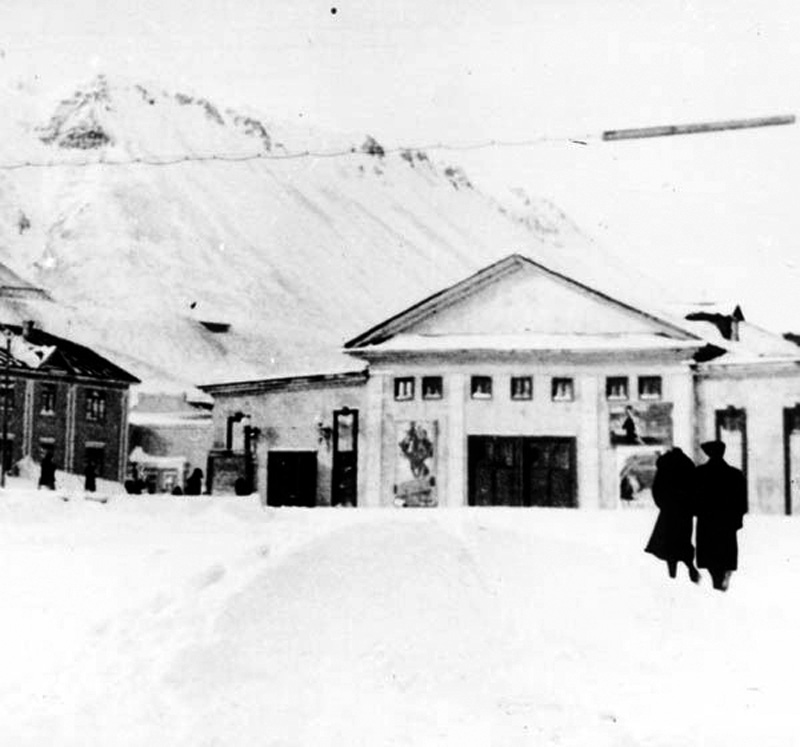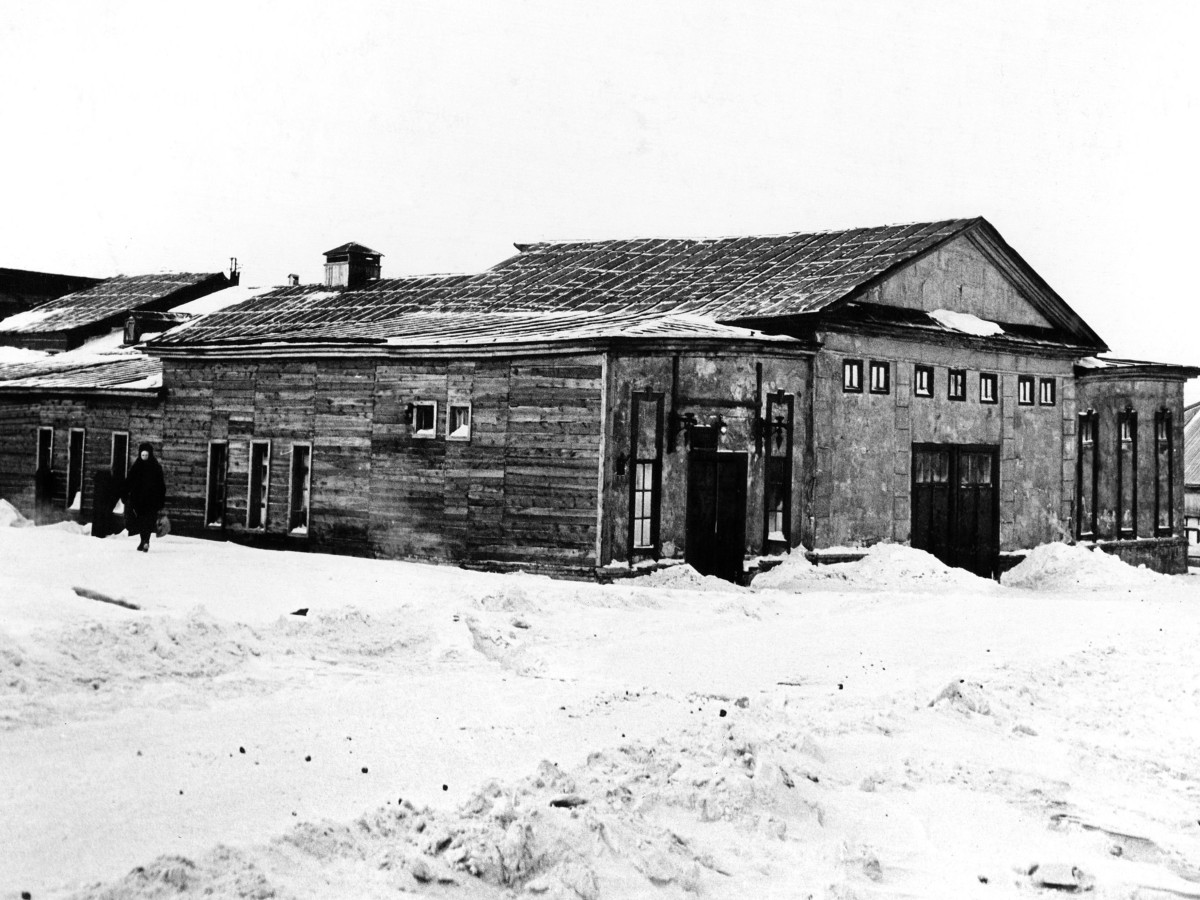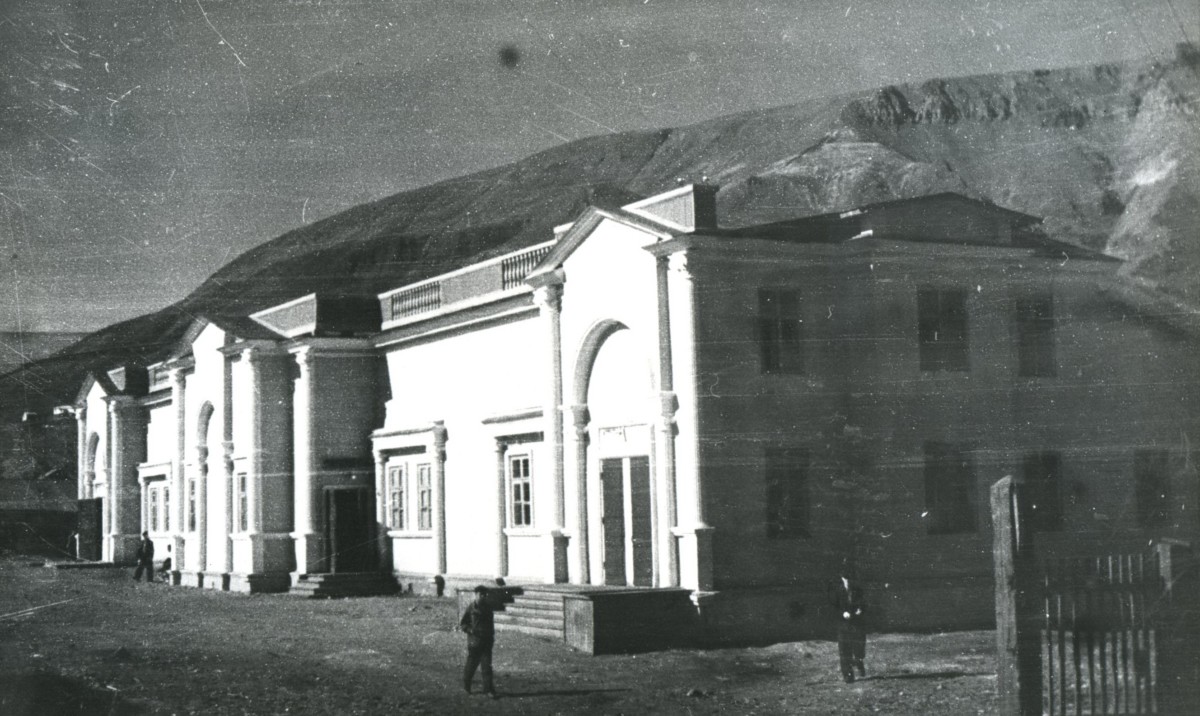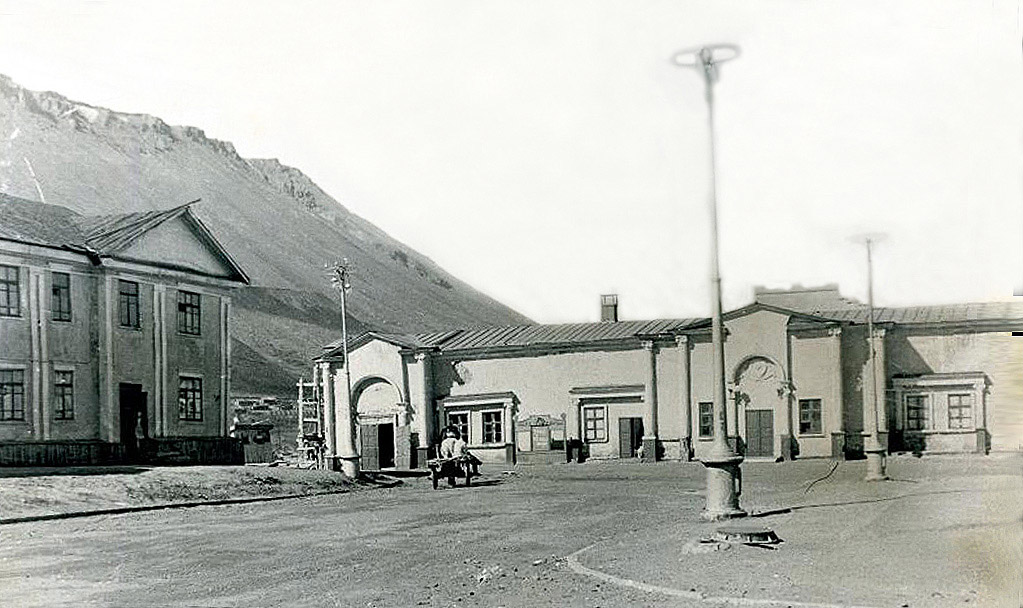#ARCTIC. #SIBERIA. THIS IS TAIMYR. After the war start in Norilsk, there was a shortage of everything – products, fuel, spare parts and building materials. Housing hunger was also sharp.
By 1941, only four combine’s enterprises had “red corners”. In large forced labor camp departments, there were clubs, often combined with dining rooms. The only cultural center for the civilians was the miners’ club. Geographically, it was at the intersection of Gornaya and Zavodskaya streets. Moreover, the miners’ club in the past belonged to that camp department, where the intelligentsia, convicted under the 58th article, mainly lived.
A movie forward worked in the miner’s club, a trade union library was located, the first Polar theater was accepted here when it came from Igarka on tour in 1939 and 1941. Next to the club there was the second camp department’s dining room – as they said “the best in Norilsk”. It was used for performances.
The same dining room was the first scene when Norilsk got its own theater – called the Second Polar one. In 1944, the former camp canteen was significantly expanded by attaching a scene and dressing rooms.
In 1946, the Norilsk theater became the mixed theater of drama and musical comedy, and this increased the staff to 211 people. Therefore, the premises expansion and the sheds extension continued. But in the same year, “alarming calls” appeared: orders for freezing of the soil necessary to straighten the deformation of the building. The struggle with the drawdown lasted several years, but to no avail.
From the memoirs of the Norilsk theater actor Boris Golman:
“The building on the Zero Point was beautiful. Wooden, but with a real theater vestibule, left and right lobbies, a visual hall with 550 places, a balcony, four lodges of Benoir, a magnificent stage platform, excellent acoustics. The season of 1953-54 opened on October 1 by the performance Somov and Others. And suddenly… the scene began to sink. The combine’s director ordered to urgently move the cinema – to the Engineering and Technical Worker House’s branch – at the end of Sevastopolskaya street. In a matter of weeks, they attached a lobby, dressing rooms, made a scene, a balcony. On November 6, the Song about Black Sea Sailors opened the theater’s three decades’ life in this building”.
In the History Spot’s previous publication, we told that in the 1950s the elections in Norilsk were not easy.
Follow us on Telegram, VKontakte.
Text: Svetlana Ferapontova, Photo: Nornickel Polar Branch archive








